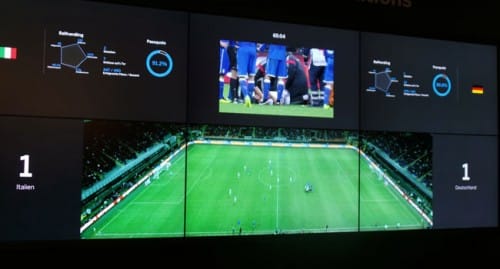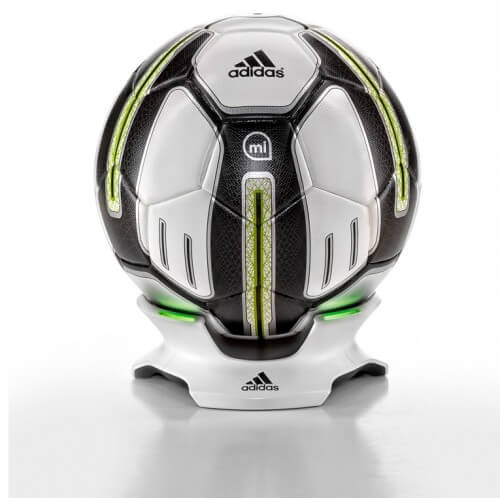About smart soccer and the technology that allowed the German national team to train for the 2014 FIFA World Cup

Today, the 2014 FIFA World Cup opens in Brazil, the soccer world championship or as it has been called since one championship in the XNUMXs, the World Cup.
Soccer is the most popular sport in the world, and as such it attracts a great many technological initiatives, from all kinds of angles related to the game: there are some that focus on the television coverage, some that deal with judging the game and of course some that are related to the health of the players.
But the really big revolution in football, which is becoming more and more popular these days, is the Moneyball revolution. This is a phenomenon that started precisely in American baseball, a sport in which huge amounts of statistics are collected, which are then used to analyze, compare and improve the players and the tactics they and the teams use.
Despite the large amount of money invested in football, the moneyball revolution is in its infancy, but many companies are investing time and money in developing tracking and information gathering technologies. The vision is that players running after a ball will wear sensors on their bodies that measure their position, running speed, body temperature, heart rate and other data, which will be transmitted in real time to the Big Data system. This will analyze their performance in real time and allow the coach to remind them how to correct, to know which of them is tired and needs to be replaced.

FIFA, the world governing body of the sport, does not allow too many technologies to enter the game for various reasons (mainly due to conservatism), and for years it even prevented the referees from watching replays in cases of a controversial goal, but for the 2014 FIFA World Cup , several companies have developed sensor systems for football players, if not during the game then at least for training.
Adidas has announced a smart football that contains micoach Smart Ball sensors. The name is taken from a sensor located in the center of the ball and which feeds information to an iPhone application via a Bluetooth link.
The ball transmits to the coach the strength of the kick, the direction of the ball's flight and the exact position where the player touched the ball. The data is quantified and presented visually in an application that can be used as a training tool to help players plan penalty kicks, passes and more.
When its battery is charged and the Bluetooth connection is active, the information becomes available at the trainer's fingertips. Indeed, the Achilles heel of the bullet, according to the gadget sites, is the charging time. The ball contains the wireless charging components and all that is needed is to insert it into a special slot in the charging device that comes with it in the same box, and wait for the LED to start flashing - a sign that charging has begun.
A full charge of a bullet takes an hour, and it can be used for two thousand times, 165 hours of standby or a combination of the two. 165 hours is less than a week, this means that it is necessary to recharge once every few training sessions, and preferably a day or two before the training session and not a week. The price of such a ball is 300 dollars. As far as is known, it will not be sold in Israel at this stage.
At the Savit exhibition held in Germany in March, we interviewed Stefan Sieg, senior vice president and SAP HANA product manager, who describes the technology developed by SAP for the field of sports, which includes the use of sensors and the analysis of their data with the help of the database located entirely in the computer's memory - SAP HANA.
"As part of this process, HANA now handles real-time location data and can answer questions in the context of location. The way in which the geographic engine is embedded in Hana takes advantage of the processing capacity in memory and allows you to go inside and see more and more details each time. This is such a heavy feature that it can only work using an in-memory database," Zieg said.
But what does this have to do with football? Zig explained that "in the case of the football application, the players wear sensors, including of course a sensor that records the position of the players in the dimensions of length, width and height, as well as the ball. After this data is stored, the game can be run from any possible angle, even that of the ball, without photographing it with any camera. For visual needs, software can be built that will contain the real players' data in XNUMXD and show their movement from every angle. Our vision is that it will be possible to replace the traditional television broadcast with imaging based on the movements of the sensors."
The system, which has been operating for some time in the training of the German national team, was introduced by Oliver Bierhoff, a former national team player who today serves as a professional manager and as a sports and technology ambassador for SAP.
The way spectators experience football may change drastically. SAP football software. Photo: Avi Blizovsky
"We want to improve our preparations for important tournaments like the World Championship. If in the past we let them watch recordings of games to analyze their form of play, this was not effective because they are not managers who are able to sit in long meetings. They were just tired. The new technology allows the coach to know whether the players are exerting themselves (according to the heart rate), whether they are tired, and to offer them in real time to move to the right or left to reach the ball," Bierhoff said about the use of technology by the 'Manschaft' (German national team).
He added and explained that "in the short term we have developed a communication tool that allows players to analyze their game and that of their opponents. In the long term, I want us to have a database that will use all the data collected on each player so that we can characterize each role in the game and young people will be able to know from the data whether they are suitable for the role of a defender or a striker. We also make the trainings individual according to the player's data and his role instead of uniform fitness training for everyone. In addition, I would like to know about each player what his penalty kick success statistics are.
"The players love it and every spare minute they log into the iPad and look at the pictures and at lunch they talk to each other about the performance."
But the new system also has opponents - Bierhoff said that football legend Franz Beckenbauer said that "the computer cannot score a goal".
Jim Hagman Sanba, co-CEO of SAP, said that "the use of the system in sports will be more understandable to the general public than the acceleration of business processes or the optimization of logistics. Soccer is the third industry that our systems enter and improve, the previous two being sailing competitions and Formula 1 car racing. I hope that the associations will also align themselves with the introduction and allow the use of technology."
Zig also adds that the consequences go beyond football. "The tire manufacturer Pirelli has embedded sensors in the truck tires it manufactures that transmit to the truck's computers and from there to a central database, and it can warn in real time when a tire is about to explode. The logistics companies will be willing to pay to save the downtime of the trucks and the damage caused to the cargo," he claimed.

4 תגובות
Even in football they write kicks and not times
l